Can a Pedestrian Be at Fault for a Car Accident?
Drivers generally bear greater responsibility when sharing the road with pedestrians. For this reason, drivers are often at fault when a car hits a pedestrian. However, insurance companies do not always determine fault fairly, which is why it is common for pedestrians to face wrongful blame for an accident and receive less money than they deserve or obtain no compensation whatsoever.
Read on to learn more about fault in pedestrian accidents, why drivers are often at fault for hitting a pedestrian, and the various blame tactics insurance companies use to devalue or deny claims arising from these accidents.
If you suffered recent injuries as a pedestrian, you should never deal with false claims of fault by insurance companies. Immediately seek representation from a pedestrian accident attorney who can present evidence of fault and seek the full compensation you deserve.
Request A Free Consultation Today!
Fault in Pedestrian Accidents
When an accident occurs involving a vehicle and a pedestrian, the aftermath can be filled with not only physical and emotional turmoil but also financial and legal complexities. One notable complication is the stance insurance companies often take in such situations.
- Fact: Every year, about 8,000 pedestrians are killed after being hit by cars across the United States.
While it might be assumed that the pedestrian, as the more vulnerable party, will receive the benefit of the doubt, this is not always the case. Insurance companies, operating as profit-driven entities, have a vested interest in minimizing payouts, which sometimes manifests in tactics designed to shift blame onto the pedestrian.
In most car-pedestrian accidents, the driver bears responsibility for hitting the pedestrian. In such cases, the determination of fault often hinges on one party’s ability to establish the other party’s negligence by showing the following four elements:
- Duty of care. The other party owed them a duty of care. In pedestrian accidents, drivers owe a duty to pedestrians to use reasonable care and drive carefully.
- Breach. The other party breached the duty of care by acting negligently. A driver may breach the duty of care by failing to slow down when approaching a crosswalk at which the pedestrian was hit.
- Causation. The party’s breach caused the victim’s injury. Had the driver slowed down when approaching a crosswalk, the victim would not have suffered their injury.
- Damages. The victim suffered actual damages, such as medical bills, lost income, diminished earning capacity, pain and suffering, and others.
Determining fault often requires the assistance of a pedestrian accident lawyer who can analyze the facts of your case, collect all available evidence proving the driver’s fault, and defend you against possible blame tactics employed by the driver and their insurer.
How a Driver May Be at Fault for Hitting a Pedestrian
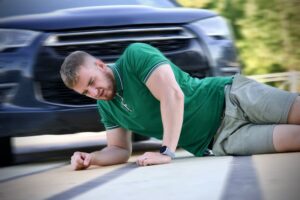 While each pedestrian accident has specific circumstances, there are common root causes where the driver’s fault may be established. Below are some of the most common ways a driver may be legally at fault for hitting a pedestrian:
While each pedestrian accident has specific circumstances, there are common root causes where the driver’s fault may be established. Below are some of the most common ways a driver may be legally at fault for hitting a pedestrian:
- Speeding. Exceeding the speed limit is one of the leading causes of many road accidents, including those involving pedestrians. Speeding can result in a driver’s slower reaction time to unforeseen pedestrian movements, making it harder to stop or slow down to prevent a collision. In addition, studies have shown that the speed at which a vehicle is traveling at the time of hitting a pedestrian is directly correlated with the pedestrian’s probability of suffering a severe injury or dying. The average risk of severe injury and death is 90 percent at 46 mph and 58 mph, respectively.
- Distracted driving. Any activity that diverts attention from driving increases the risk of a crash. It includes talking on the phone, texting, adjusting the radio, and using a navigation system. If a pedestrian is struck because the driver was not paying full attention to the road, the driver will typically be liable for the accident.
- Making an improper turn. Improper turns can be dangerous, especially if a driver fails to notice a pedestrian crossing legally at an intersection. Suppose a driver hits a pedestrian while making an illegal or otherwise unsafe turn (e.g., turning from the wrong lane or at a red light). In that case, the driver will likely bear responsibility for any injuries sustained by the pedestrian.
- Failure to yield the right of way. Pedestrians often have the right of way, particularly when crossing at marked crosswalks or when pedestrian crossing signals allow passage. A driver who fails to yield or disregards these rules and subsequently hits a pedestrian may be liable for breaching their duty of care.
- Failure to slow down at crosswalks. Drivers are expected to slow down when approaching a crosswalk and watch for pedestrians who may be crossing or about to cross the road. If a driver strikes a pedestrian in a crosswalk due to failure to slow down or be vigilant, the driver may bear full fault for the collision.
- Running a red light. Traffic signals are in place to regulate the flow of both pedestrian and vehicle traffic. A driver who fails to stop for a red light or stop sign and hits a pedestrian is generally considered liable for any resulting injuries or damages.
- Drunk driving. Consumption of alcohol impairs coordination, judgment, and reaction times. A driver found to be intoxicated at the time of a pedestrian accident will almost certainly be found at fault. Statistics show that alcohol impairment is a factor in an estimated 40 percent of all fatal pedestrian accidents.
Unfortunately, it is not always easy to prove the driver’s fault in a pedestrian accident, which is why many pedestrians may struggle to secure compensation and often face accusations of being at fault by the driver and/or their insurance company. Hiring a pedestrian accident attorney is the best move in this situation.
Common Blame Tactics Insurance Companies Use Against Pedestrians
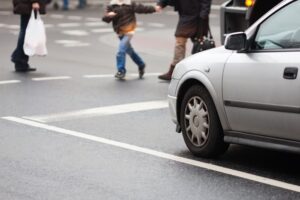 When a pedestrian is involved in an accident, insurance companies may attempt to minimize their liability by shifting some or all of the blame onto the pedestrian. Below are some of the most common blame tactics used by insurers to make the pedestrian at fault for a car accident:
When a pedestrian is involved in an accident, insurance companies may attempt to minimize their liability by shifting some or all of the blame onto the pedestrian. Below are some of the most common blame tactics used by insurers to make the pedestrian at fault for a car accident:
- Jaywalking or illegal crossing. One of the primary assertions made by insurance companies against pedestrians is that the pedestrian was jaywalking or crossing the street outside of a designated crosswalk or against the traffic signal. “The pedestrian crossed where there was no crosswalk, so the driver was not expecting to encounter a pedestrian and can not reasonably prevent the accident,” the insurer may argue.
- Distraction. In today’s world, distractions from mobile devices or other activities are common among drivers and people navigating cities on foot. Insurers may claim the pedestrian was not paying full attention while crossing the road, which contributed to the accident. “The pedestrian was using their phone or was otherwise distracted, but had the pedestrian been alert, they could have avoided or mitigated the impact,” the insurer may argue.
- Visibility issues. Visibility often plays a key role in pedestrian safety. Insurance companies may argue that the pedestrian was hard to see, and thus, the driver could not react in time to avoid the collision. “The pedestrian was not wearing reflective clothing at night or was in a poorly lit area, and the driver’s inability to see the pedestrian absolves or lessens their responsibility,” the insurer may argue.
- Reckless behavior. Insurance companies might suggest that the pedestrian acted recklessly or carelessly, contributing to or causing the accident. “The pedestrian suddenly entered the road, ignoring nearby vehicles, and the pedestrian’s reckless actions left the driver with insufficient time to react,” the insurer may argue.
Understanding the tactics used by insurance companies can help pedestrians and their lawyers prepare for potential defense strategies and ensure that the pedestrian receives the compensation to which they are entitled.
Reasons the Insurance Company May Try to Blame the Pedestrian
Unfortunately, it is not an uncommon scenario for injured pedestrians to face accusations that they were at fault for the accident in which they were hit. Many insurance companies do this intentionally, even when the driver is at fault, due to the following reasons:
- Pay less than what might be expected. The principle is simple: if the insurance company can prove the pedestrian is entirely or partly at fault for the incident, the compensation they are obligated to pay can be significantly reduced.
- Avoid paying a claim altogether. If the insurance company proves the pedestrian was fully responsible for the incident, they may avoid paying out any claims related to the pedestrian’s injuries. This scenario often involves arguments that delve into the pedestrian’s potential lack of attention, jaywalking, or even impairment due to substances. Should the insurer convincingly establish that the pedestrian’s actions solely caused the accident, the financial responsibility can shift away from the insured driver – a clear win for the insurance company.
In pursuing these strategies, insurers will scrutinize evidence from multiple sources. It can include police reports, witness statements, traffic surveillance footage, and even data from electronic devices that may demonstrate the pedestrian was distracted during the accident. To counteract these strategies and blame tactics, pedestrians must be prepared to present a strong case supported by evidence that underscores the driver’s liability, which is often done by demonstrating the driver’s negligent vehicle operation.
- Note: Keep in mind that some states, including Florida, operate under a no-fault insurance system. This means that an injured party – be it a pedestrian or another party on the road – can seek compensation through their own insurance company regardless of fault. Florida law requires every vehicle owner with a current state registration to purchase and maintain Personal Injury Protection (PIP) under Fla. Stat. § 627.7407.
Factors That Affect the Pedestrian’s Compensation
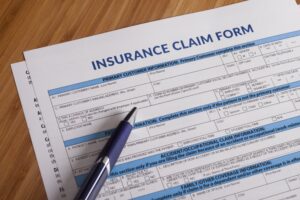 There are plenty of factors that may affect the amount of money you can receive when pursuing compensation after a pedestrian accident, including:
There are plenty of factors that may affect the amount of money you can receive when pursuing compensation after a pedestrian accident, including:
- The severity of the injuries. The nature and severity of the pedestrian’s injuries are among the most significant and obvious factors affecting compensation. Severe injuries typically result in higher compensation due to the extensive medical treatment required, the possibility of long-term or permanent disability, and the greater impact on the individual’s quality of life.
- The amount of medical expenses. All medical expenses, from emergency care to long-term rehabilitation, can amount to a substantial sum. The cost of these treatments is accounted for in the compensation. This includes past, present, and projected future medical expenses associated with the injury.
- The injury’s effect on the pedestrian’s earning capacity. If the injuries impair the pedestrian’s ability to work temporarily or permanently, compensation may include loss of income and diminishment of future earning potential. A severe injury can prevent someone from returning to their former occupation or working, resulting in substantial economic implications.
- The injury’s effect on other aspects of the pedestrian’s life. Compensation often reflects the impact of the injury on the pedestrian’s daily living. This encompasses physical and emotional pain and suffering, loss of enjoyment of life, and the inability to participate in activities that were once part of the pedestrian’s routine.
- The tenacity and competence of the insurance claims adjuster. The compensation process frequently involves negotiations with an insurance claims adjuster, who minimizes the insurance company’s payout. A competent claims adjuster with tenacity may influence the amount and speed of the settlement offered.
- Whether the car driver is clearly at fault. If the car driver is liable for the accident, the path to compensation may be more straightforward for the pedestrian. However, the insurance company will likely use the blame tactics we discussed earlier if there is a dispute over fault.
- The quality of the pedestrian’s legal representation. Quality legal representation can tremendously impact the outcome of a compensation claim. A skilled pedestrian accident lawyer will build a strong case by investigating the accident’s circumstances, negotiating with insurers, and, if necessary, advocating for the pedestrian’s rights in court.

Navigating the complexities of the legal system and the adversarial nature of the insurance claims process underscores the necessity for legal guidance. With a personal injury attorney on your side, you can maximize the amount insurance will pay to turn your life back around.
Free Consultation
We Are Here For You 24/7
Reviews
– Elissa M.
“Really pleased with Boohoff Law! Received immediate responses when I had any questions. Treated amazingly by all staff … made this process a true breeze!”
– Caitlyn M.
– Brandy K.
Related Posts
I Was Partially At-Fault in a Rear-End Crash. Can I Still Get Compensation in Florida?
I Was a Passenger in an Uber Accident. What Are My Rights?
What Damages Can I Recover After a Jackknife Truck Accident?
Recovery is personal.
We’re here for you.
We’re close by. And if you can’t make it to us, we’ll meet you where you need us, at home or in the hospital.
You're better off with Boohoff.




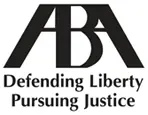
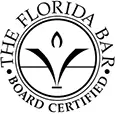





The information on this website is for general information purposes only. Nothing on this site should be taken as legal advice for any individual case or situation. This information is not intended to create, and receipt or viewing does not constitute, an attorney-client relationship.
available 24/7
(877) 999-9999
